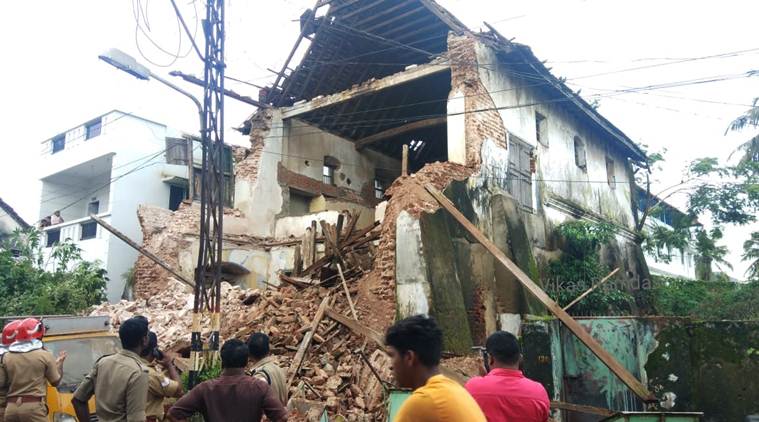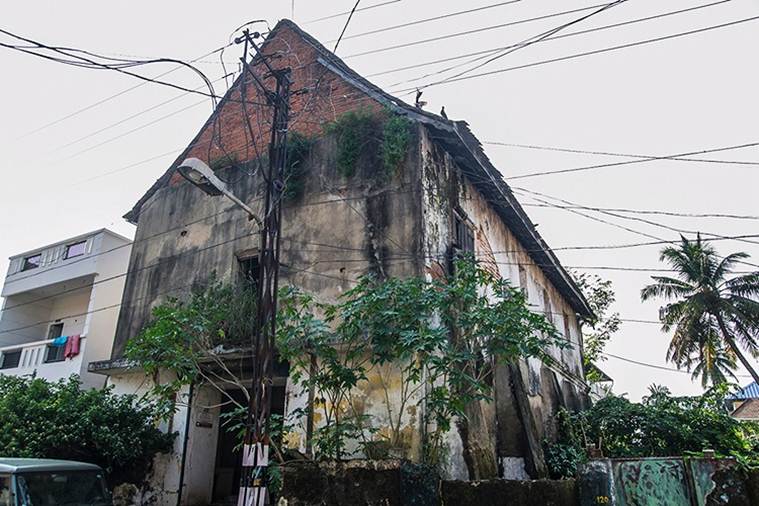
The cultural and religious history of Kochi in Kerala has been blemished with the collapse of one of Kerala’s oldest synagogues on Tuesday. The Kadavumbhagom synagogue in Mattanchery, believed to have been built in 1550 AD and which hosted regular prayers up until 1956, came down in a heap of rubble, propelled by overnight heavy showers. The building, long considered wobbly and unstable, was in the possession of a private individual and had been used as a storage space for the past many years.
The synagogue in Mattancherry served as a temple for the Malabar Jew community, also known as Black Jews, in Kochi, who migrated from northern Kerala after the war between Chola Raja and the Cranganore Maharaja. It is believed to have been built by the younger son of Joseph Rabban, a prominent Jewish aristocrat in Kerala. In fact, the term ‘Mattancherry’ is derived from ‘mattana’ (gift in Hebrew) and ‘cheri’ (settlement in Malayalam). The synagogue was built after the Cochin King gave Rabban’s younger son a portion of the land in Ernakulam as a gift.
Another synagogue, also referred to as the Kadavumbhagom synagogue, was built by Rabban’s elder son in the middle of a busy trader market in Ernakulam, on the other side of the sea. In recent years, the Ernakulam synagogue was restored to its full glory by Elias Josephai, one of the last surviving Malabar Jews in Kochi.

“After a large section of the Jews left for Israel, the Mattanchery Kadavumbhagom synagogue building was sold to a British man in 1961. It changed hands thrice before it was set to be taken over by the government. Interestingly, all three private individuals, who were rich before they bought the building, went bankrupt later,” said Josephai over phone.
For centuries, the Malabar Jews have shared a hostile rivalry with the Paradesi (Foreigner) Jews, who came to Kochi from Spain and Portugal in the 15th-16th century. The Paradesi Jews are also referred to as White Jews. Both branches of the Jewish community have had separate synagogues and festivities on special occasions.
As per the 1948 census, there were 1998 Malabar Jews and 252 Paradesi Jews in Kerala. Today, the number of Malabar Jews has whittled down to 22 whereas, Paradesi Jews’ population is less than 10. One of the latter’s popular residents in Mattancherry, Sarah Jacob Cohen, passed away last week at the age of 96.
Josephai said if the Kadavumbhagom synagogue had been given due attention by the state government’s archaeological division, it would have stood as a proud marker of the city’s cultural melting-pot. It stood ignored and derelict even as the 1568-built Paradesi synagogue, a few doors down in Mattancherry, attracted tourists.
The original complex of the synagogue had a two-storey gatehouse, a Beit Midrash (Hebrew school), a connecting breezeway and the main sanctuary. It stood out to the sea and even had a landing site for boats, in front. Orpa Slapak, an editor of a book on the Jews of India, wrote about the Kadavumbhagom synagogue, It “surpassed all others in its elaborate ornamentation and its beautifully carved and painted woodwork, particularly in the ceiling. The two-storied rectangular brick building, plastered and whitewashed, has a tiled roof and four buttresses on each side, reinforcing the long walls. It stands in a walled, paved courtyard and its floor plans run lengthwise, aligned southeast to northwest…inside the synagogue, in front of the women’s gallery and separated from it by a latticework partition, was an additional reader’s desk, which was reached by steps from the central hall and was used by the hazzan on Sabbaths and festivals.”
The synagogue’s interiors had outstandingly carved woodwork done in teak. A rich influence of Indian motifs could also be seen including lotus blossoms, birds, fish, frogs and even cobras.
With the destruction of the building, that once served as a temple for a thriving Jewish community, one of Kochi’s glorious chapters has come to an end.